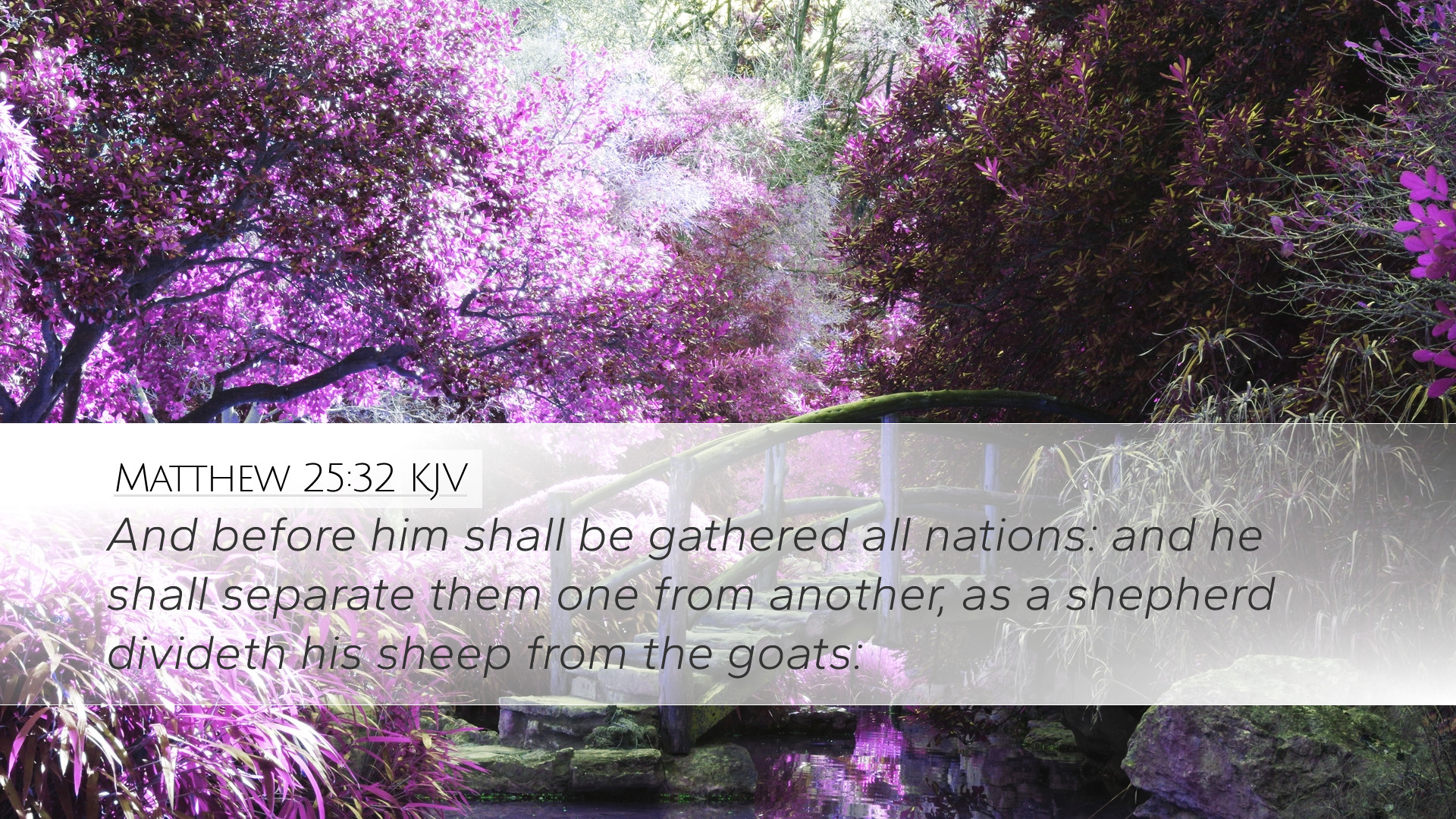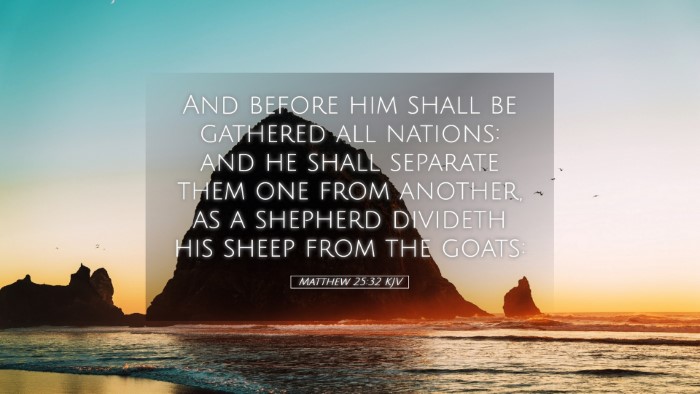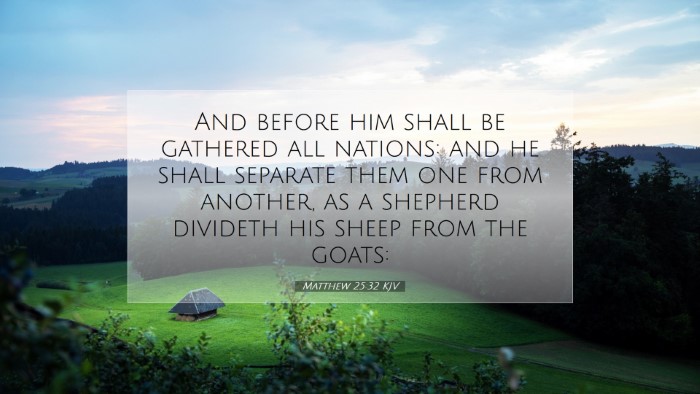Commentary on Matthew 25:32
Verse: Matthew 25:32 - "And before him shall be gathered all nations: and he shall separate them one from another, as a shepherd divideth his sheep from the goats."
Introduction
This verse is part of the eschatological discourse of Jesus, presenting a vivid picture of the final judgment. The imagery of the shepherd separating sheep from goats serves as a profound metaphor for the discernment that will take place at the end of the age.
Gathering of the Nations
This passage opens with a dramatic scene where all nations are gathered before Christ. Commentators like Matthew Henry suggest that this signifies the inclusiveness of the judgment; it is not limited to the righteous or the Jews alone but encompasses all peoples regardless of their backgrounds.
Albert Barnes notes that the gathering represents a universal accountability to God, where each individual will stand before the throne to account for their deeds. This concept reinforces the idea that every person, regardless of their heritage or life choices, will face the righteous judgment of Jesus Christ.
The Role of the Shepherd
In this verse, Jesus portrays Himself as the shepherd. This metaphor emphasizes the authority and care inherent in His role. Adam Clarke elaborates on this, indicating that a shepherd is responsible for the well-being of his flock, which serves to remind believers of the shepherd's protective and guiding nature.
Furthermore, as Clarke points out, the act of separating the sheep from the goats illustrates the moral and spiritual responsibility that Christ has over His followers. The separation is not random but rather a deliberate act of judgment based on the lives lived in faith and obedience.
The Nature of Judgement
The imagery of separation is significant. Matthew Henry highlights that this division will be based on the deeds done in life—those aligning with Christ’s teachings will be welcomed as sheep, while the goats represent those who lived apart from His guidance.
This duality of outcomes serves both as a warning and an encouragement to believers. To dwell further, Albert Barnes emphasizes that this separation is not merely a matter of identification but also of destiny—a distinction between eternal life and eternal punishment, thus underscoring the weight of each individual's choices and their implications.
Theological Implications
From this text, doctrinal implications arise regarding judgment and grace. Adam Clarke articulates that one cannot overlook the grace offered through Christ; however, this does not negate the responsibility to lead a life reflective of His teachings. While grace provides salvation, judgment reveals the evidence of that salvation in one’s life.
The contrast of sheep and goats speaks to the transformative nature of faith. True faith should inherently produce good works, as emphasized throughout scripture. Matthew Henry suggests that the final judgment will reveal the authenticity of faith and the willingness to serve others, aligning one's actions with the principles of the Kingdom of God.
Practical Applications
For pastors, students, and theologians, this scripture offers rich ground for reflection and application. Albert Barnes encourages the faithful to lead lives of service, as helping those in need is central to the Christian calling. Engaging in acts of kindness, mercy, and justice reflects one's alignment with the shepherd.
Furthermore, the image of separation urges self-examination: Are we living as sheep or goats? Matthew Henry mentions that believers are called to relentless self-assessment to ensure their lives resemble the sheep—marked by faith, love, and service to others.
Conclusion
Matthew 25:32 encapsulates a vital teaching on the nature of judgment and the call to discipleship. The blending of the shepherd-sheep-goat metaphor with the reality of divine judgment serves as both a comfort and a challenge. Believers are encouraged to live lives that reflect their faith openly and authentically, motivated by love and service—essential qualities of those who will ultimately be identified as God’s sheep.
As we reflect on this profound truth, may it lead us to deeper commitment and a greater understanding of our role within God's eternal plan.


